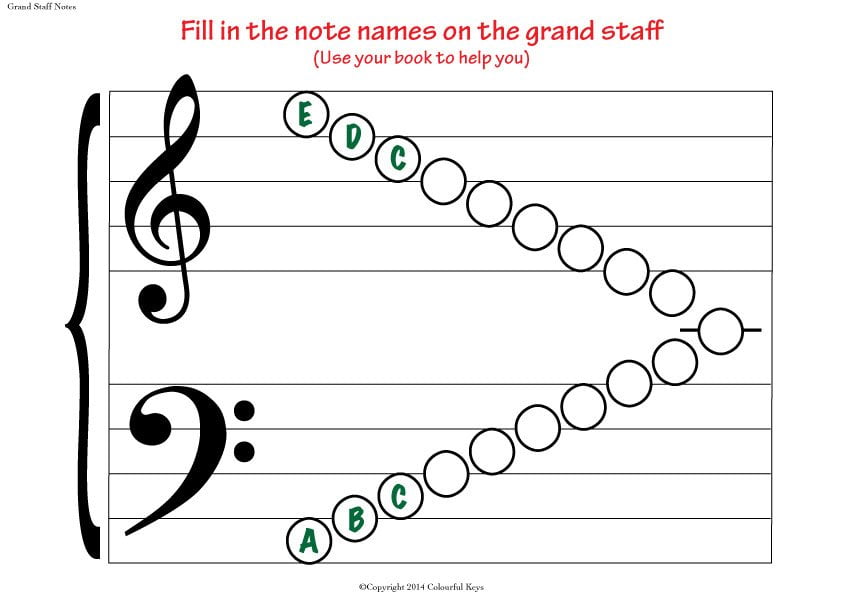As soon as the grand staff is introduced in piano lessons, I do everything I can to help students understand how it works. This is key to future note reading success at the piano.

Memorising notes along the way helps, but if you don’t “get it” it can cause so many problems later on. Music notation is a simple mathematical structure in essence.
Many times transfer students have come to me with grand staff issues. They know the note names…but they don’t know where they live on the piano. They often don’t know the difference between bass C and middle C for example.
When this happens, there has been some kind of a disconnect and misunderstanding of the grand staff. With these worksheets students can see that the music alphabet simply repeats itself – just like on the piano.
There’s nothing mysterious about it. Filling in the note names on this grand staff blank notes worksheet can help to drive home how simple it is. If you can see the grand staff as a map of the piano, everything else falls into place in time.
This is why I use this worksheet. Students fill in the musical alphabet, and suddenly it’s not so overwhelming. It just repeats itself over and over.
The first version is for younger students, and the second for older students, who can write in smaller letters. Just click on the image to download the pdf, and have fun!
Do you need a comprehensive music theory book for beginners?
Thinking Theory workbooks could be a good fit for your studio. In Thinking Theory concepts are explained clearly and concisely with plenty of review. There are even games to play to help memorise terms and symbols.
Take a look inside Thinking Theory to see if it might be right for you.



This is amazing, I can never nice, or fun accessible work sheets to help them memorize their note reading!